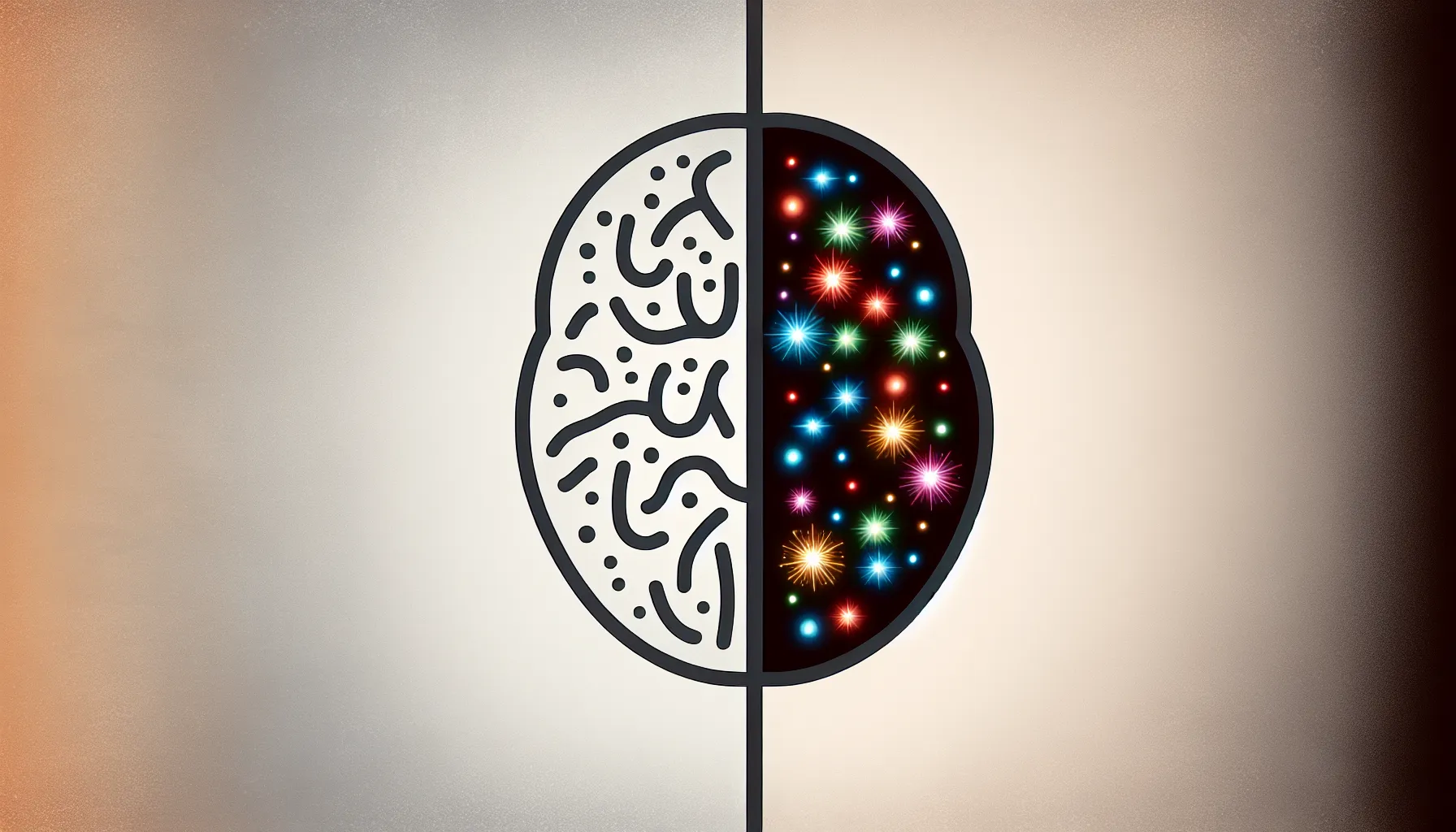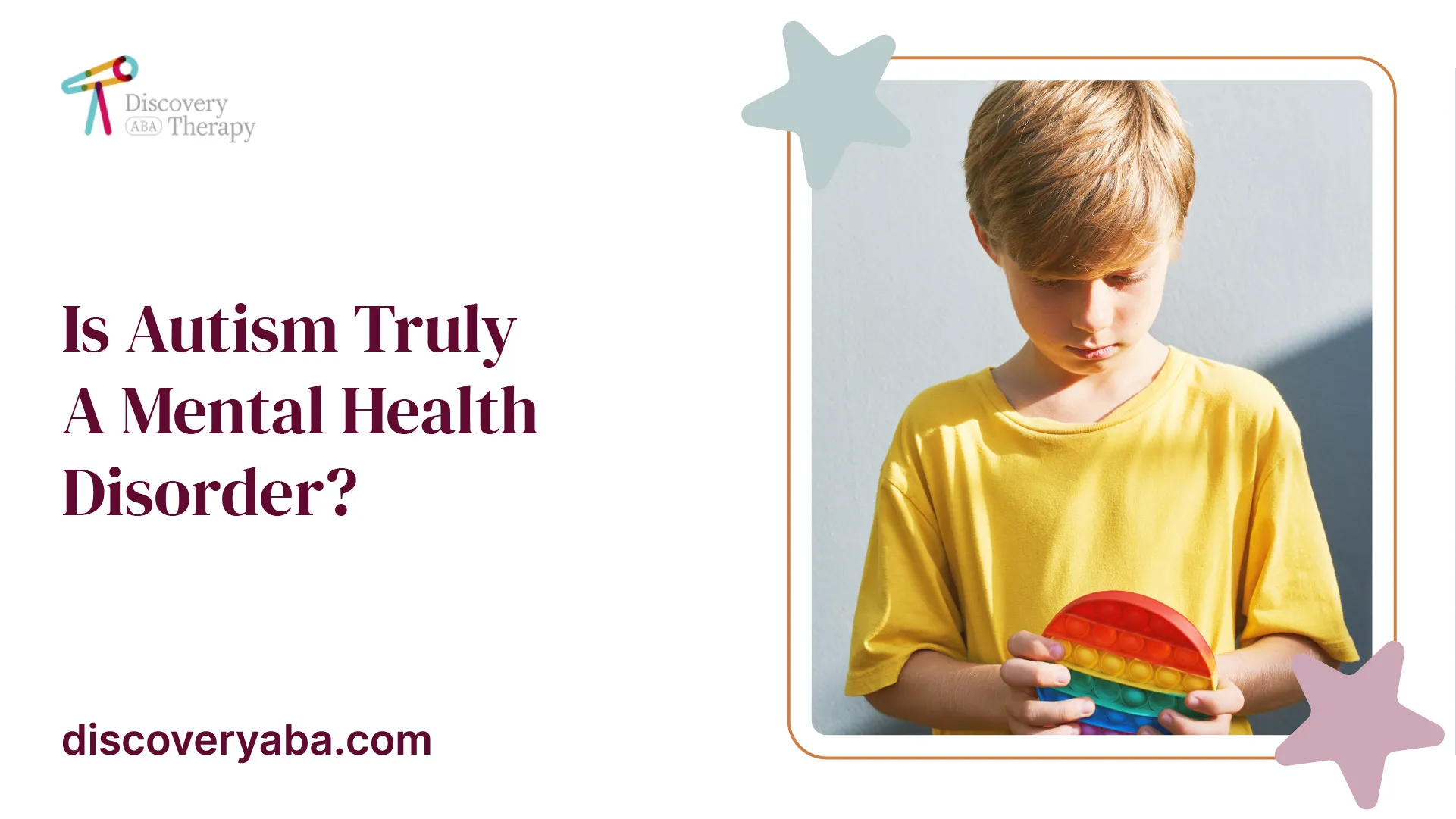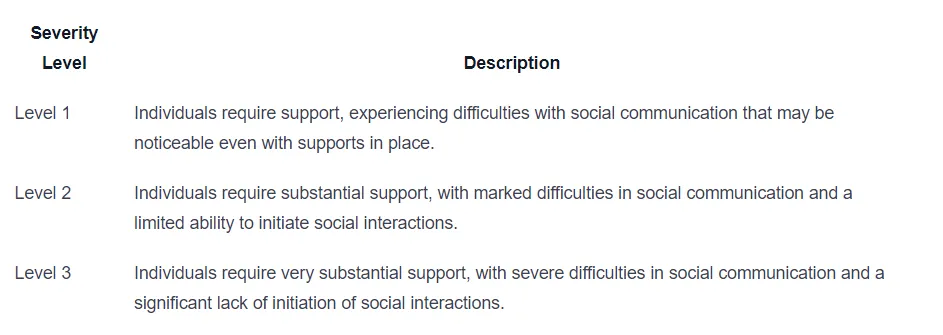Is Autism Truly a Mental Health Disorder?
Unraveling the autism debate: Is autism truly a mental health disorder? Explore the causes, treatments, and support for individuals with ASD.

Understanding Autism Spectrum Disorder
Autism Spectrum Disorder (ASD) is a complex neurological and developmental disorder that affects how individuals interact with others, communicate, learn, and behave. The symptoms of ASD can vary greatly across the spectrum, with some individuals experiencing more severe impairments than others.
Core Symptoms of ASD
ASD is characterized by two core symptoms: difficulties with social interaction and communication skills, as well as restricted and repetitive behaviors. These symptoms can manifest differently in each individual, making ASD a spectrum disorder.
Difficulties with social interaction may include challenges in understanding and responding to social cues, difficulties forming and maintaining relationships, and a preference for solitary activities. Communication difficulties can range from delayed language development, difficulty understanding nonverbal cues, or repetitive and rigid language patterns.

The restricted and repetitive behaviors seen in individuals with ASD can include repetitive movements or speech patterns, intense fixation or interest in specific topics, or adherence to strict routines and rituals. These behaviors often serve as a way for individuals with ASD to cope with their environment.
Severity Levels of ASD
ASD severity levels are categorized based on the level of support an individual requires. The severity levels are as follows:

It's important to recognize that not all individuals with ASD exhibit the same symptoms or severity levels. The spectrum nature of ASD means that each individual may have unique strengths and challenges.
Understanding the core symptoms and severity levels of ASD is crucial in providing appropriate support and interventions for individuals on the spectrum. By recognizing and addressing these symptoms, individuals with ASD can thrive and reach their full potential.
Causes and Diagnosis of ASD
Autism Spectrum Disorder (ASD) is a complex neurological and developmental disorder that affects various aspects of an individual's life, including social interaction, communication, learning, and behavior. The exact causes of ASD are not fully understood, but research suggests that a combination of genetic and environmental factors contribute to its development.
Genetic and Environmental Factors
Genetic factors play a significant role in the development of ASD. Numerous studies have shown that certain genes may be associated with an increased risk of developing ASD. However, it is important to note that no single gene can account for the entirety of ASD. Rather, it is believed that multiple genes, acting in conjunction with each other and with environmental factors, contribute to the development of the disorder.
Environmental factors also play a role in the development of ASD. These factors can include prenatal influences, such as exposure to certain medications or toxins during pregnancy, as well as complications during birth or early childhood. However, it is important to note that not all individuals exposed to these environmental factors will develop ASD, highlighting the complex interplay between genes and the environment in the development of the disorder.
Diagnostic Process for ASD
Diagnosing ASD involves a comprehensive assessment of a person's behavior and development. Doctors do not rely on a single lab test to diagnose ASD; instead, they rely on careful observation of behaviors and communication with parents and caregivers to make an accurate diagnosis.
The diagnosis of autism typically occurs in two stages. During routine check-ups at the 18- and 24-month mark, pediatricians assess developmental milestones and observe behaviors. If concerns arise during these assessments, further evaluation is recommended. This evaluation may involve a team of specialists, including psychologists, psychiatrists, and speech therapists, who conduct in-depth assessments to determine if the individual meets the criteria for an ASD diagnosis.
To make an official diagnosis of ASD, the individual must meet the criteria outlined in the Diagnostic and Statistical Manual of Mental Disorders (DSM-5) published by the American Psychiatric Association. The DSM-5 criteria require the individual to exhibit difficulties in two specific categories, such as social communication and restricted/repetitive behaviors, to be classified on the autism spectrum.
Through a thorough evaluation process, healthcare professionals can provide an accurate diagnosis of ASD, allowing individuals and their families to access appropriate interventions and support. Early diagnosis and intervention are crucial in improving outcomes and maximizing the potential of individuals with ASD.
Treatment and Interventions for ASD
When it comes to autism spectrum disorder (ASD), early intervention plays a crucial role in minimizing difficulties and helping individuals build on their strengths and learn new skills. Research suggests that early diagnosis and interventions, especially during the preschool years or earlier, are more likely to have significant positive effects on symptoms and later skills of individuals with ASD [3].
Early Intervention Importance
Treatment for ASD should ideally begin as soon as possible after diagnosis. Early treatment can make a significant difference in the lives of individuals with ASD. It can help reduce difficulties, improve social interaction, communication skills, and behavior regulation, allowing individuals to reach their full potential.
Tailored Therapies for Individuals
There is no one-size-fits-all treatment for ASD. Each individual with ASD is unique, and the most effective therapies and interventions are often tailored to the individual's specific needs and challenges. Highly structured and specialized programs have been found to be beneficial for most people with ASD, providing targeted support and guidance.
Here are some commonly used therapies and interventions for individuals with ASD:
Behavioral Approaches
Behavioral approaches are widely accepted for treating symptoms of ASD. Applied Behavior Analysis (ABA) is a notable treatment that focuses on encouraging desired behaviors and discouraging undesired behaviors to improve various skills. ABA utilizes teaching styles like Discrete Trial Training (DTT) and Pivotal Response Training (PRT) to target specific goals and promote positive behavior changes.
Developmental Approaches
Developmental approaches aim to enhance specific developmental skills or a broader range of interconnected developmental abilities. These approaches are often combined with behavioral interventions. Speech and Language Therapy is a common developmental therapy for individuals with ASD, focusing on improving speech and language understanding and use.
Educational Treatments
Educational treatments, such as the Treatment and Education of Autistic and Related Communication-Handicapped Children (TEACCH) approach, provide structured classroom settings with visual learning aids, routines, and clear instructions. These interventions aim to improve academic and other outcomes for individuals with autism.
Pharmacological Approaches
Pharmacological approaches do not address the core symptoms of ASD but may help manage co-occurring symptoms such as high energy levels, focus issues, self-harming behavior, anxiety, depression, seizures, and other medical conditions. It is crucial to work with experienced doctors to monitor progress and reactions to medication.
While there is currently no cure for autism, there are various effective interventions available to improve a child's functioning. It's important to note that there is currently no compelling evidence to recommend any specific complementary or alternative interventions for ASD. With appropriate support and opportunities, children with ASD can make significant progress in overall functioning, establish meaningful relationships, and achieve a good level of independence as adults.
Related Disorders and Medical Comorbidities
Autism Spectrum Disorder (ASD) is often associated with other disorders and medical comorbidities. Understanding these related conditions is essential for a comprehensive understanding of the challenges faced by individuals with ASD.
Associated Disorders with ASD
At least seven disorders are either part of or closely related to Autism Spectrum Disorder. These include:
- Williams Syndrome
- Fragile X Syndrome
- Landau-Kleffner Syndrome
- Prader-Willi Syndrome
- Angelman Syndrome
- Rett Syndrome
- Tardive Dyskinesia
These disorders may present with overlapping symptoms or share genetic and environmental factors with ASD. Recognizing these associations is crucial for accurate diagnosis and appropriate interventions for individuals with ASD.
Common Medical Conditions in ASD
In addition to associated disorders, individuals with Autism Spectrum Disorder often experience various medical comorbidities. Some of the common medical conditions seen in individuals with ASD include:
- PANS/PANDAS (Pediatric Acute-onset Neuropsychiatric Syndrome and Pediatric Autoimmune Neuropsychiatric Disorders Associated with Streptococcal Infections)
- ADD/ADHD (Attention Deficit Disorder/Attention Deficit Hyperactivity Disorder)
- Seizures (Epilepsy)
- Dental Issues
- Sleep Disturbances
- Gastrointestinal Symptoms
GI (gastrointestinal) disorders, in particular, are nearly eight times more common among children with autism than other children [8]. These disorders can significantly impact the overall well-being and quality of life of individuals with ASD. Therefore, comprehensive care for individuals with ASD should include attention to these medical comorbidities.
It's important for healthcare professionals and caregivers to be aware of these associated disorders and medical conditions, as they may require additional evaluation and specialized interventions. By addressing the unique needs of individuals with ASD and their related disorders or medical comorbidities, we can provide more comprehensive support and improve their overall quality of life.
Behavioral and Developmental Approaches
When it comes to addressing the symptoms and challenges associated with Autism Spectrum Disorder (ASD), behavioral and developmental approaches have proven to be effective. These approaches aim to improve various skills and enhance overall development in individuals with ASD. Two prominent approaches in this regard are Applied Behavior Analysis (ABA) and Speech and Language Therapy.
Applied Behavior Analysis (ABA)
Applied Behavior Analysis (ABA) is widely recognized as an effective treatment for individuals with ASD [4]. ABA focuses on encouraging desired behaviors and discouraging undesired behaviors through a systematic approach. This approach utilizes teaching styles such as Discrete Trial Training (DTT) and Pivotal Response Training (PRT).
By breaking down skills into smaller, manageable steps, ABA aims to promote learning and development. It involves the use of positive reinforcement to reinforce desired behaviors and decrease problematic behaviors. ABA programs are often tailored to the individual's specific needs and may address various areas such as communication, social skills, and daily living skills.
Speech and Language Therapy
Speech and Language Therapy is a developmental approach commonly used to support individuals with ASD. This therapy focuses on improving speech and language understanding and use. It aims to enhance communication skills, including verbal and non-verbal communication.
Speech and Language Therapy involves working with a speech-language pathologist who assesses the individual's communication abilities and develops targeted interventions. These interventions may include exercises, strategies, and techniques to improve articulation, vocabulary, sentence structure, social communication, and pragmatic language skills.
By providing individuals with ASD the necessary tools to communicate effectively, Speech and Language Therapy plays a crucial role in promoting social interaction, self-expression, and overall quality of life.
It's important to note that while ABA and Speech and Language Therapy are effective approaches for addressing the challenges faced by individuals with ASD, there are other educational and therapeutic treatments available as well. These include approaches like the Treatment and Education of Autistic and Related Communication-Handicapped Children (TEACCH) that provide structured classroom settings and visual learning aids. The most effective therapies and interventions are often tailored to the individual's unique needs and strengths.
By utilizing behavioral and developmental approaches, individuals with ASD can receive targeted support and interventions that help enhance their skills, improve communication, and promote overall development.
Supporting Individuals with ASD
Supporting individuals with Autism Spectrum Disorder (ASD) involves a collaborative approach that encompasses various aspects of their lives, including parental involvement in treatment and fostering success and independence.
Parental Involvement in Treatment
Parental involvement plays a crucial role in the treatment and support of individuals with ASD. Parents are often the primary caregivers and advocates for their children, and their active participation in the treatment process can make a significant difference in their child's progress.
By actively engaging in their child's therapy sessions, parents can learn techniques and strategies to implement at home, reinforcing the skills learned in therapy. This consistency between therapy and home environments can enhance the effectiveness of interventions. Additionally, parents can provide valuable insights into their child's strengths, challenges, and progress, helping therapists tailor treatment plans to meet the individual needs of the child.
Furthermore, parents can educate themselves about ASD, attending workshops, support groups, and seeking information from reputable sources. This knowledge equips parents with a better understanding of their child's condition, enabling them to make informed decisions about treatment options and interventions.
Success and Independence with ASD
It is essential to recognize that individuals with ASD can achieve success and independence with appropriate support and opportunities. Each person with ASD is unique, with distinct strengths, challenges, and treatment needs. While ASD affects how a person communicates and interacts socially, it is not categorized as a mental health disorder. Instead, it is related to brain development and characterized by difficulties in social interaction, communication, and repetitive behaviors.
With appropriate interventions and support, children with ASD can make significant progress in overall functioning. Many individuals with ASD excel and can remain in regular education classrooms. Establishing meaningful relationships with family and peers is achievable, leading to a good level of independence as adults. It is crucial for parents and caregivers to remember that children with ASD can achieve success with the right support and opportunities.
By providing a supportive and inclusive environment, encouraging the development of strengths, and focusing on individual goals, parents can help their children with ASD thrive. Celebrating achievements, promoting self-advocacy skills, and fostering independence can empower individuals with ASD to lead fulfilling lives.
Remember, supporting individuals with ASD requires a comprehensive approach involving multiple professionals and various settings. Collaboration among parents, caregivers, educators, therapists, and the broader community can create a supportive network that enhances the well-being and success of individuals with ASD.
References
- https://www.nimh.nih.gov/health/topics/autism-spectrum-disorders-asd
- https://www.webmd.com/brain/autism/how-do-doctors-diagnose-autism
- https://www.nichd.nih.gov/health/topics/autism/conditioninfo/treatments
- https://www.psychiatry.org/patients-families/autism/what-is-autism-spectrum-disorder
- https://www.healthychildren.org/English/health-issues/conditions/Autism/Pages/Diagnosing-Autism.aspx
- https://autism.org/related-disorders
- https://www.autismspeaks.org/medical-conditions-associated-autism
- https://www.mayoclinic.org/diseases-conditions/autism-spectrum-disorder/symptoms-causes/syc-20352928
Does Your Child Have An Autism Diagnosis?
Learn More About How ABA Therapy Can Help
Find More Articles
Contact us
North Carolina, Nevada, Utah, Virginia
New Hampshire, Maine
Arizona, Colorado, Georgia, New Mexico, Oklahoma, Texas
.avif)




































































































